| Address: | 2115 Elmira Street, Muskogee, Oklahoma | County | Muskogee |
| Started: | Completed | 1939 | |
| Agencies: | WPA | NRHP: | No |
Current Usage:
Athletic Stadium
Description:
The Muskogee High School Athletic Field and Stadiums consists of a football field, a track and two grandstands. The football field and the track are identifiable by definition, but the grandstands are rectangular. The west stands extends 286 feet, while the east stands extends 178 feet. Both are constructed from poured concrete which fashions a superstructure and risers. Each stands rises 25 tiers, the interiors of which are accessed via two “tunnels” and walkways at either end. Beneath the stands the superstructure was exposed, although portions between the “tunnels” were enclosed with tile blocks to form concession outlets. To the rear of each stands are two ticket booths constructed of poured concrete, even the curved and incised roofs. The exposed superstructure of the west stands has been partially enclosed to form rooms suitable for storage, training, and toilets. These and the addition of a press box atop the west stands have not impeached the integrity of the structures.
The Muskogee High School Athletic Field and Grandstands were quickly dubbed the “Indian Bowl.” The name came from the fact that Muskogee set in the center of a large concentration of Native Americans and the facility itself was impressive enough to be a “bowl.” The community put the complex to immediate use, and the high school became one of, if not “the” football power in the state of Oklahoma. Graduates of the team went on to the University of Oklahoma where they contributed to a establishing a football powerhouse second to none. If nothing else, the Indian Bowl is significant because it as much as anything else was responsible for the football tradition in Oklahoma. Of course, construction of it put destitute and unemployed laborers to work during the depths of the depression, activity that also infused into the Muskogee main street wages for some 50,000 man-hours of labor. Architecturally, the Indian Bowl constituted the largest football complex built in Oklahoma.[1]
Although the Oklahoma Landmarks Inventory has entry of 1936 for completion, the 3 Rivers Museum has a completion date of 1939.
Coordinates: 35.744998962445806, -95.34511999554927
Sources:
- Oklahoma Landmarks Inventory Nomination
- The Living New Deal
- Marjorie Barton, _Leaning on a Legacy: The WPA in Oklahoma_, Oklahoma Heritage Association, 2008. Pg. 39-40.
- https://www.3riversmuseum.com/uploads/7/1/5/7/7157239/vol3no4.pdf
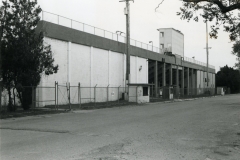
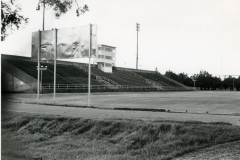
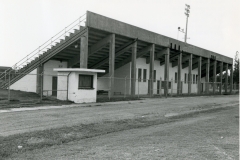
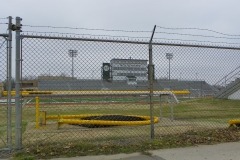
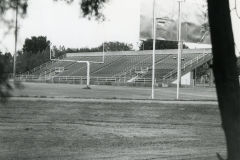



Leave a Reply